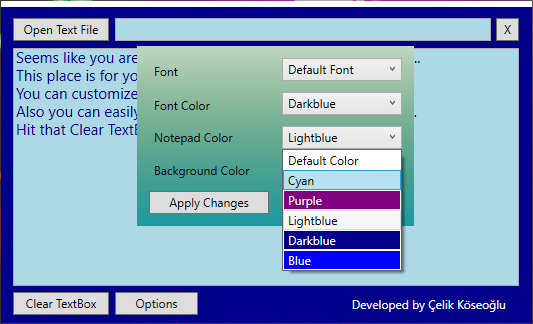QNote - The most lightweight note taking app
This is how my story begins.
November 24, 2019 - 8 min read
Technologies Used: Microsoft Visual Studio, C# .NET, WPF
Was Available For: Windows Desktop, Windows Phone
This blog is special to me. Because QNote is the first application that I've ever published.
The story of QNote begins in 2011. I was fifteen years old and still in high school. I've been reading some random programming books since I was twelve, and experimenting with stuff on the side but I had no solid understanding of the big picture.
One day, I went to the nearest book store and asked for a programming book for iOS because the iPhone was getting really popular. The fifteen year old version of me wanted to get an iPhone, jailbreak it, install cool homebrew stuff etc. At the same time, I wanted to learn how people actually made apps for this device. However, the bookstore had no books on Objective-C. I walked out the bookshop with a book called Step By Step C# 2011 by John Sharp. (That was how I never learnt Objective-C. Now, the year is 2019 and I'm up for the challenge if need be)
So while reading this C# book, I started making some experimental Windows Desktop applications using C# .NET. At first, everything looked weird compared to my previous adventures because you had this .XAML file to define a layout and C# code to implement UI behaviour. This was the first time I was doing GUI programming.
Anyway, a short while later, I had something that looked like this:




Since it was a Windows Desktop app, it also required an app icon. I used to play Minecraft at the time. I could say it influenced my design choices:

It was cool (to me anyway). I uploaded it to sites.google.com and asked my friends to check it out. About 2 weeks later, I saw some people in my class using it. They were writing phone numbers, GTA cheat codes, homework tasks and all sorts of other things inside. It was more convenient than NotePad or Microsoft Word for them. It opened very quickly, and closed with a press of the ESC key.
Some time later, Microsoft announced Windows Phone 8. Making apps for Windows Phone was very similar to Windows Desktop. This was how they were planning to get many developers on-board. I was one of them, so I got myself a nice Lumia 920 and started porting QNote onto it. Many hours later, it was ready to publish to Windows Phone store.
It looked like this:



I had to be a bit more serious with the app icon this time, so I made this:

And this was the description in the Windows Phone Store:
Makes note taking fast, simple and easy on Windows Phone devices. Unlike other note taking apps, QNote does not require the user to wait for a few seconds to get ready for note taking. It starts up in milliseconds, the user takes some notes and then locks the phone to close the application. Perfect for taking quick notes on the go!
In a similar fashion to the Windows Desktop version, it was extremely fast to start. That's probably because it was literally a TextBox inside a view. But that's what some people wanted. A dead simple note taking application. Install size was around 25KB.
I've kept updating it with small optimizations and a more polished user interface. Here is one of my tweets from that time:

In its two years on the Windows Phone Store, QNote got around 1200 downloads. It was always free. Always will be free. As of the publication date of this blog post, both Windows Phone and Windows Desktop versions are open source. You can all see how bad my coding skills were when I first started. It's all about progress.
Moral of the story is:
We all start from somewhere.
Now go and chase your dreams.